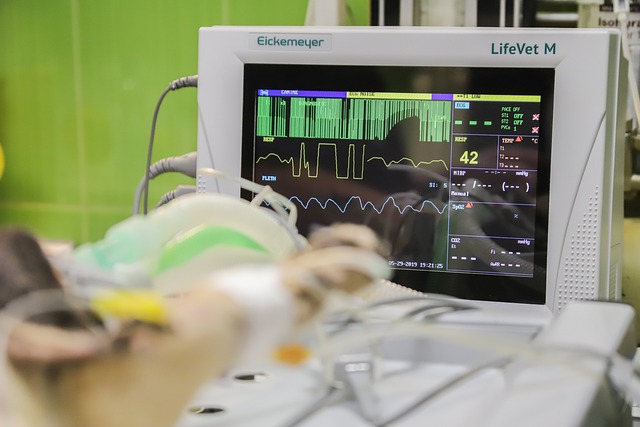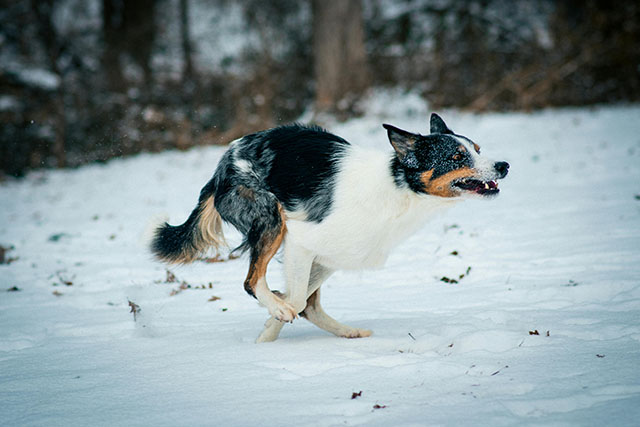No matter how well you look after your pet, unfortunately, sometimes they develop health conditions that are entirely out of our control as pet parents. An example of this is the development of cancer or a tumor.
Keeping a close eye on your dog and taking them to your veterinarian as soon as you see something abnormal increases the chances of an early diagnosis and, hopefully, a more favorable prognosis.
There are often many questions when it comes to pets and cancer, so in this article, we’ll provide brief answers to the following questions:
- How is cancer in dogs diagnosed?
- What are the stages of dog cancer?
- How can cancer in dogs be treated?
If you want to read more about how to help keep your dog healthy, read our articles on How to take care of a dog for good Health: A Comprehensive Guide and The Benefits of a Comprehensive Dental Care Plan for Dogs.
How is cancer in dogs diagnosed?
During the initial consultation, a veterinarian will begin by asking you questions about your pet’s condition, such as:
- When you first noticed any changes.
- Whether any aspects of your dog’s behavior, health, or routine have also changed.
- Whether they’ve had cancer before.
- Information about your pet’s general health and routine.
After they have the answers to these questions, they will examine your pet. Don’t be surprised if you notice that they examine your pet completely, and don’t just focus on the problem area. As well as checking the affected area, it’s important for them to have information about your pet’s health in general.
It’s good to be aware that your veterinarian can’t diagnose the type of tumor without having information regarding the type of cells involved. Some tumors may have characteristic appearances or symptoms; however, it’s always best to confirm.
Depending on your pet’s symptoms and where the suspected tumor is located, your veterinarian may talk to you about possible further diagnostics, such as:
- Biopsy – this involves taking a small sample of the affected area and sending it away for an external examination to determine the type of cells involved.
- Fine Needle Aspiration – this involves taking a very small aspiration of content from the affected area to determine the type of cells involved.
- Ultrasound Examination – this can’t be used to confirm the type of tumor; however, it helps look at the size of internal tumors and confirm whether they have spread or not.
- X-ray examinations – to measure the size of internal tumors and see whether they have spread.
- Surgery – in some cases, a veterinarian may recommend removing the tumor and then sending it away for confirmation regarding the type of tumor.
- Blood tests – to look for changes in a dog’s blood parameters, which can indicate decreased function or increased stress of an organ.
- Urine testing – to look for changes in kidney performance associated with some tumors.
You can read more about the above methods in this article.
What are the stages of dog cancer?
The ‘stages’ of dog cancer are the result of a technique used by veterinarians to classify tumors in pets and can have a different approach depending on the type of tumor. In general, it tends to consider similar points.
Staging cancer helps veterinarians collaborate to give owners information regarding their pet’s treatment plan and prognosis.
When staging a tumor, a veterinarian will think about where the first tumor was located and its size, whether any lymph nodes have become involved, and whether it has spread (metastasized) to other areas of the body.
Following other diagnostics such as biopsies, ultrasound examinations, x-rays, and surgeries, they will also be able to add information such as the type of tumor, its grade, and whether it’s spread. There are a few staging systems, and the TNM is often used as follows (source):
- T – refers to the level of development of the initial (primary) tumor.
- N – refers to whether and if so, how affected are nearby lymph nodes.
- M – refers to whether the cancer has spread to other areas.
Staging cancer helps veterinarians collaborate to give owners information regarding their pet’s treatment plan and prognosis.
How can cancer in dogs be treated?
The prognosis and treatment of cancer in dogs depend on a few factors such as:
- The stage of the cancer.
- Your dog’s response to previous treatment.
- Your dog’s general condition and age.
- Whether your dog has had cancer before.
- The success of any prior treatment.
Examples of methods used to treat cancer include:
- Medication – this can include chemotherapy targeted explicitly at the tumor or things to alleviate symptoms and help make your pet feel more comfortable.
- Radiation therapy – to try and stop cancer cells from replicating and spreading (source). Radiation therapy also affects normal cells and is often used with other methods.
- Surgery – to remove the tumor and take a sample which can be examined under a microscope to determine the type of tumor.
All three of the above treatments require frequent visits to a veterinarian for both the procedure and monitoring. It’s also good to know that often, a multimodal approach is used when helping pets with cancer, meaning that a combination of methods are used to help your pet feel better.
It’s good to be aware that supportive care that helps a dog feel more comfortable and alleviates symptoms is often a big part of helping dogs with cancer.
Supportive care can include pain medication, food supplements, and special diets.
Conclusion
After reading this article, we hope you have more information regarding dogs with cancer. It’s a worrying thought; however, by regularly checking your pet for abnormalities, you can help spot changes early and get them the help they need.
Don’t forget, if you’re worried about something in your pet, it’s best to contact your veterinarian.

Charlotte qualified as a veterinarian in 2023 and has been working as a writer for several years helping pet parents understand how to help their pets live happy healthy lives whilst pursuing her interests in wildlife conservation.
She enjoys traveling and has undertaken positions in Belgium, Spain, Austria, Germany, and the Galapagos and has a 15-year-old rescue dog called Chiki.





